Exhibit: The Ice Age Mammals that Roamed Throughout the Greater Kansas City Area
Introduction
Author-Uploaded Audio
Dr. Richard Gentile offers a guided tour of the exhibit. This recording of Dr. Gentile was made by David Trowbridge in the Department of History in the summer of 2021.
Text-to-speech Audio
This exhibit within UMKC's Flarsheim Hall shares the work of the late Dr. Richard J. Gentile, Professor Emeritus at the University of Missouri-Kansas City. The exhibit debuted at the Box Gallery in downtown Kansas City and was moved to this location in October, 2022. The exhibit invites students, faculty, and guests to the university to explore and learn about this region during the Ice Age when herds of giant mammals lived in the area. Most of the species on display became extinct about 10,000 years ago. This exhibit compares skeletal remains of Ice Age mammals with their modern day relatives including the giant ground sloth, woolly mammoth, mastodon, saber-toothed cat, and the giant beaver. The first photo within this Clio entry, as well as the 360-degree image within the Google Streetview section of this Clio entry, show how the exhibit now appears on the UMKC campus. The rest of the photos depict the exhibit during its 2021 debut at the Box Gallery.
Images
The exhibit as it appears on the UMKC campus
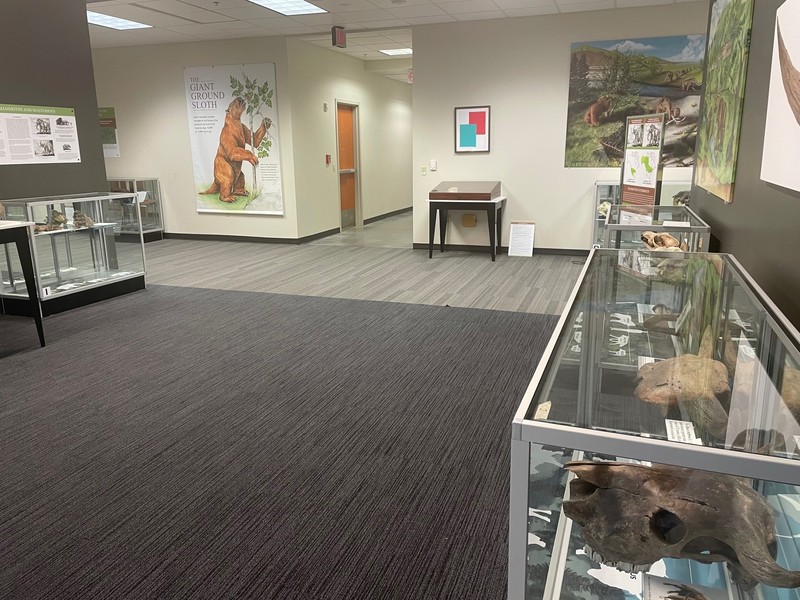
The exhibit as it originally appeared at the Box Gallery in downtown Kansas City
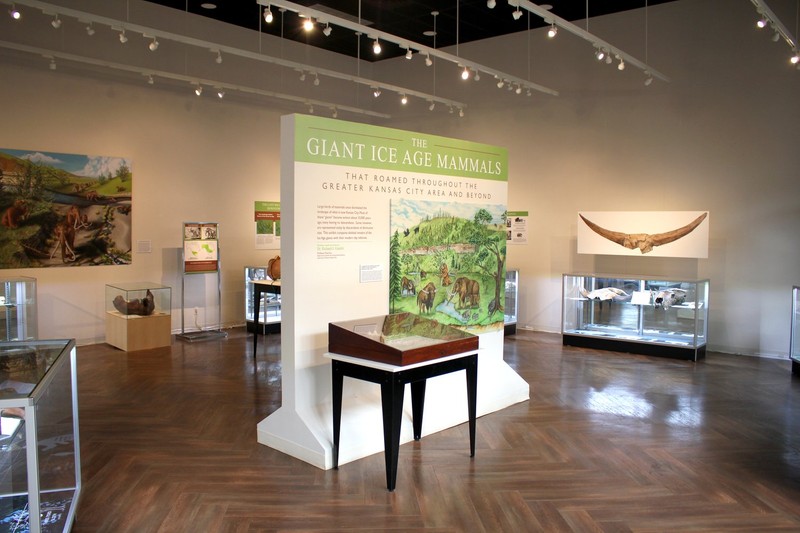
Dr. David Trowbridge interviewing Dr. Richard Gentile
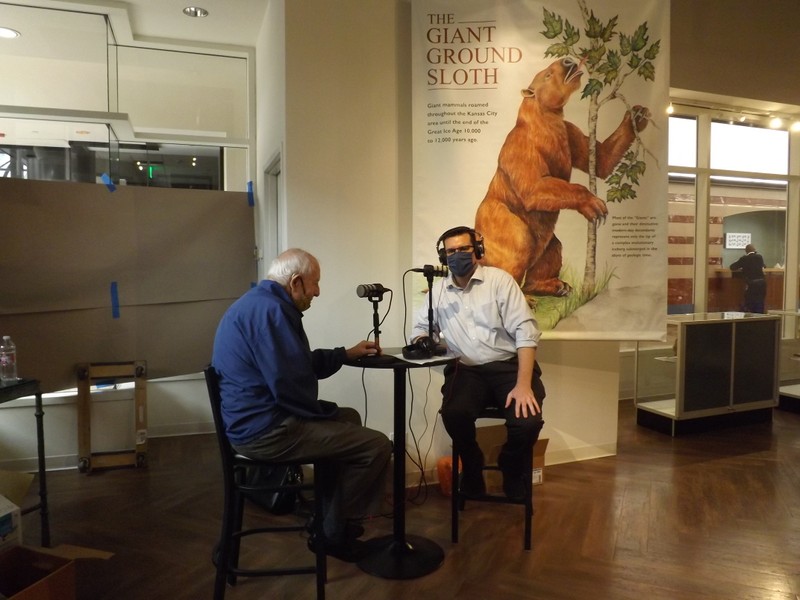
Mastodon tooth (replica) discovered on the Country Club Plaza in 1928
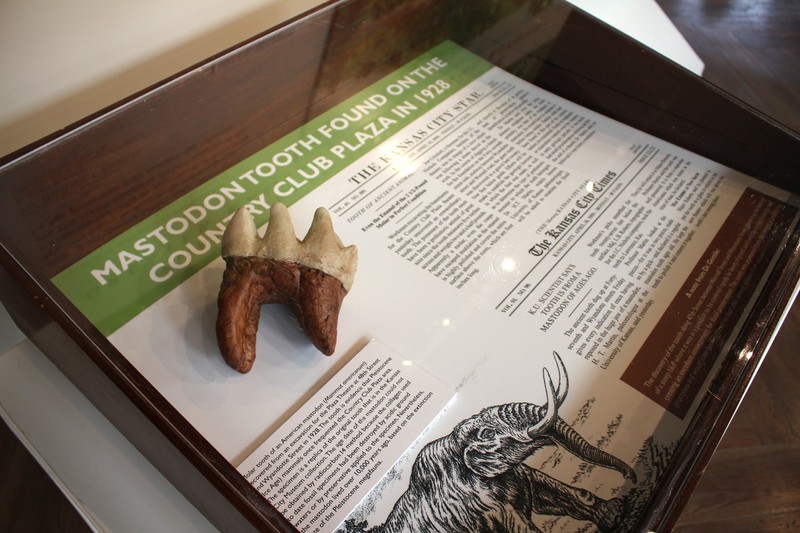
A Scene on the Country Club Plaza, KC MO, 10,000 years BC
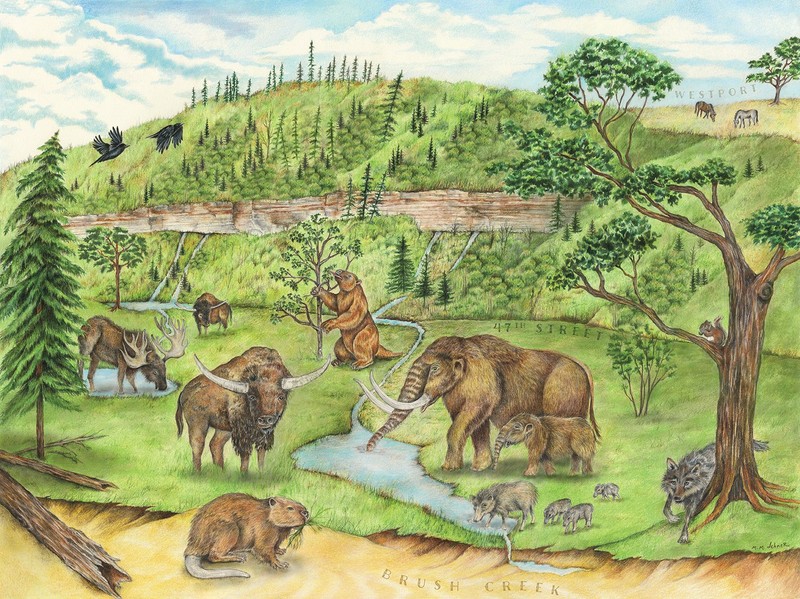
Woolly mammoth lower jaw bone
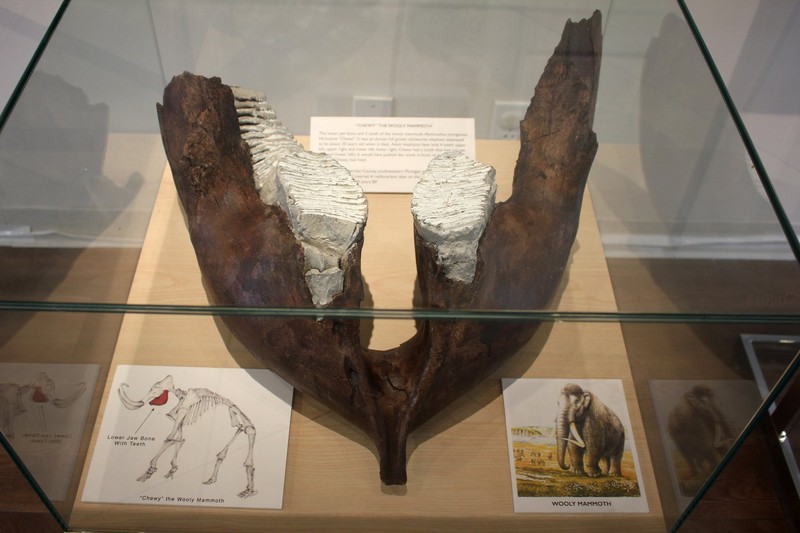
Display case comparison of Bison Antiquus (extinct) and modern bison
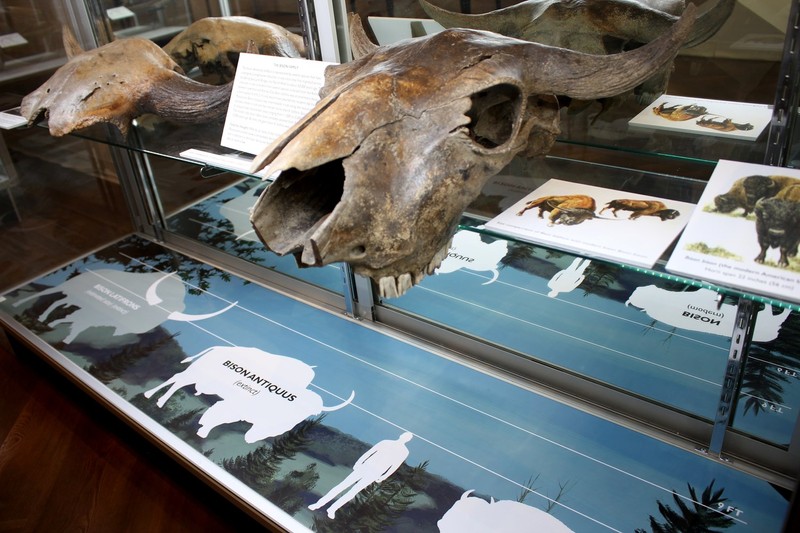
Display case comparison of the giant cave bear (extinct) and modern Black bear
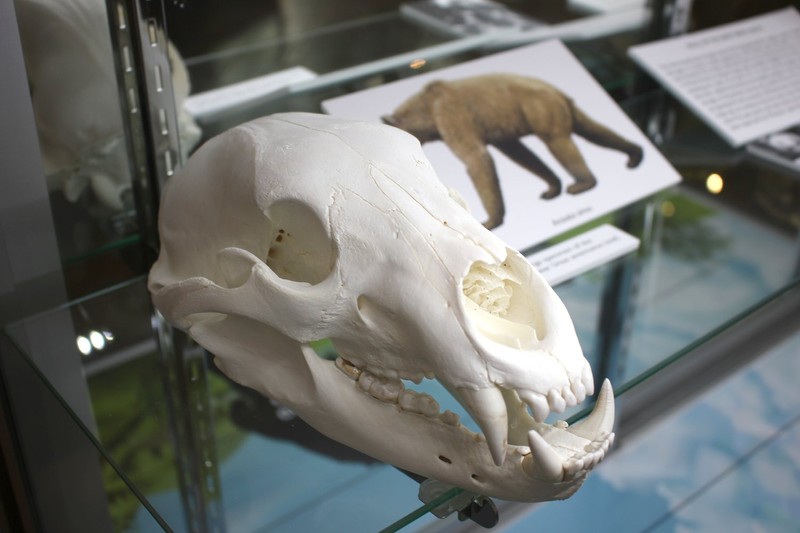
Backstory and Context
Author-Uploaded Audio
Drs. Richard Gentile and David Trowbridge discuss the exhibit and the importance of the study of geology
Text-to-speech Audio
The exhibit incorporates skeletal parts and recreations of Pleistocene (Ice Age ) animals that were recovered from sand and gravel deposits of the major rivers and tributary streams of the area. The exhibit also includes fossils found in upland areas entombed in glacial sand and gravel deposits (outwash) and in wind-blown silt (loess). Pleistocene age elephants have been reported from over half of the 114 counties in Missouri and from numerous sites in Kansas. Voorhies (1990) estimates that no fewer than 10 mammoth skeletons lie buried in the average square mile of Nebraska landscape, an indication that large numbers of these huge proboscideans once roamed across the Central Mid-Continent.
The exhibit includes information on a variety of species, including ground sloths which first appeared in South America and gradually migrated into North America via the land bridge connecting the two continents that rose about 3 million years ago during the Pliocene Epoch. The species was given the scientific name Megalonyx jeffersoni in honor of President Jefferson, an amateur paleontologists, and one of the first to study extinct ground sloths. Two years before he became president, Thomas Jefferson published a description of an assortment of fossil bones including claws that had been excavated from a cave in West Virginia. Jefferson believed the claws were those from a large meat-eating animal that he named Megalonyx or “Great Claw” and instructed Lewis and Clark on their epic journey to explore the western part of the continent to watch for such a beast.
Sources
Ballard, F. A. 1880, Mastodon remains found in Jackson County, Missouri: Kansas City Review of Science and Industry 3(2): 643-644.
Lillegraven, J.A.,1966. Bison Crassicornis and the giant ground sloth Megalonx jeffersoni in the Kansas Pleistocene: Kansas Academy of Science Transactions, vol. 69 , no. 3/4, p. 294-300.
Dunbar, C.O., 1949, Historical Geology: John Wiley and Sons, New York, 563 p.
Grimm, D., 2021. Dire wolf may not have been a wolf at all: posted in Plants and Animals, January 13, 2021; David Grimm (ed.) < dol:10.1126/science.abg 5607>
Enk, J. A. and others, 2011. Complete Columbian mammoth mitogenome suggests inter-breeding with wooly mammoths: Genome Biology 12 :R51.
Feldmann, R. M. 1996 . Fossils of Ohio: Ohio Department of Natural Resources, Division of Geological Survey, Bulletin 70, 576 p.
Forir M. and N. Ryan , 2016. The giant short-faced bear Arctodus simas in the River Bluff cave site, Greene County,Missouri: Transactions of the Missouri Academy of Science 40:95.
Gentile, R. J. 2015. Rocks and fossils of the Central United States, with special emphasis on the Greater Kansas City area: University of Kansas Department of Geology and Paleontological Institute, Special Publication 8, 2nd ed. Lawrence, 225 p.
Lillegraven, J.A.,1966. Bison Crassicornis and the giant ground sloth Megalonx jeffersoni in the Kansas Pleistocene: Kansas Academy of Science Transactions, vol. 69 , no. 3/4, p. 294-300.
Lister, A., and Bahn, P., 2007. Mammoths: giants of the Ice Age: University of California Press, Berkeley, 192 p.
Mehl, M. G. , 1962. Missouri’s Ice Age animals: Educational Series Number One, Missouri Geological Survey and Water Resources, Rolla, 104 p.
Mol, D., Agenbroad, L. D. and Mead, J. I. , 1993. Mammoths: The mammoth site of Hot Springs, South Dakota, 17 p.
Perri, A. R., Mitchell, K. J., Moulton, A. et al., Dire wolves were the last of an ancient new world canid lineage: Nature, vol. 591, March 4, p. 86-91 :
Prothero, D. R., Dott, R. H., Jr., 2010. Evolution of the Earth: 8th ed. , McGraw Hill Companies, New York, NY, 517 p.
Sanders, J. J., 1977. Late Pleistocene vertebrates of the Western Ozark Highland, Missouri : Illinois State Museum, Report of Investigations , no. 33, Springfield, 118 p.
Sutcliffe, A. J. 1985. On the tracks of ice age mammals: British Museum of Natural History, London, 224 p.
Todd, J. E. 1896.Formation of quaternary deposits. In Curtis F. Marbut, ed., Physical features of Missouri . Missouri Geological Survey, 1st series, vol. 10, Jefferson City, 533 p.
Vickers, R., Vickers, T., Fenton, M. A., and Fenton, C.L. 1989. The fossil book-A record of prehistoric life: Dover Publications Inc., New York, 740 p.
Voorhies, M. R. 1990. Fossil elephant teeth in Nebraska. University of Nebraska State Museum Notes 77: 1–4.
Voorhies, M. R. 1994. Mammoths and Muskoxen, Chapter 6. In Ken Bouc, coordinator, The cellars of time, paleontology and archeology in Nebraska: Nebraska Game and Parks Commission, vol. 72, no. 1, Jan/Feb., Lincoln. p. 67-74
Wang, X., 1990. Pleistocene dire wolf remains from Kansas River with notes on dire wolves in Kansas: Occasional papers of the Museum of Natural History, The University of Kansas Lawrence, Kansas, no. 137. p.1-7.
Weaver, D. 1996/97. Winter issue. When giants walked, exploring the ice age heritage of Missouri: Missouri Department of Natural Resources, vol.13, no. 4, p. 1-7.
West, H. H. 1887. Report on the discovery of a mastodon tusk. Western review of science and industry 1; 336-337
Photo by David Trowbridge
Photo by Robin Trafton
Photo by David Trowbridge
copyright Melissa Dehner, HoneyBee Creative
Photo by David Trowbridge
Photo by David Trowbridge
Photo by David Trowbridge
